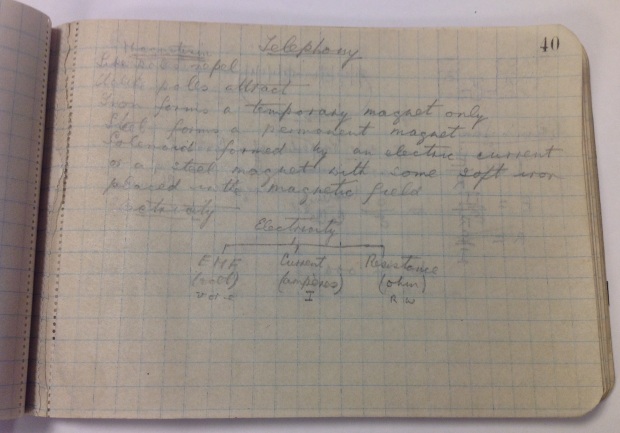Tuesday’s second hand market was bitterly cold, however one nice item did turn up, which after research proved to be particularly touching; a World War One Field Message Book: This notebook was issued to officers and NCOs to record messages to be sent back to headquarters and as a general notebook in the field. The notebook is actually a refill, which would be inserted into a leatherette cover for protection and then just replaced as it was used up. The opening page indicates that this notebook is Army Book 153 and the code at the top indicates it was made by McCourquodale & Co of London in August 1914 and is one of a batch of 45,000:
This notebook was issued to officers and NCOs to record messages to be sent back to headquarters and as a general notebook in the field. The notebook is actually a refill, which would be inserted into a leatherette cover for protection and then just replaced as it was used up. The opening page indicates that this notebook is Army Book 153 and the code at the top indicates it was made by McCourquodale & Co of London in August 1914 and is one of a batch of 45,000: The following pages give some pointers in how to write army messages:
The following pages give some pointers in how to write army messages: The rest of the book consists of numbered removable pages, each divided up into ¼” squares:
The rest of the book consists of numbered removable pages, each divided up into ¼” squares: Happily many of these pages are written on and the book has been used by an officer training men in the South East of the country. These pages include daily orders and details of guard duties and what to do:
Happily many of these pages are written on and the book has been used by an officer training men in the South East of the country. These pages include daily orders and details of guard duties and what to do: Exercises:
Exercises: Trench diagrams:
Trench diagrams: This illustration is dated 18th January 1916 and has the name of a Lieutenant AFC Paxton of the Middlesex Regiment in the bottom right hand corner. This name appears a few times and I believe this was the name of the original owner of the book. AFC Paxton was Archibald Francis Campbell Paxton who was a pupil of Epsom school before joining up in 1915.
This illustration is dated 18th January 1916 and has the name of a Lieutenant AFC Paxton of the Middlesex Regiment in the bottom right hand corner. This name appears a few times and I believe this was the name of the original owner of the book. AFC Paxton was Archibald Francis Campbell Paxton who was a pupil of Epsom school before joining up in 1915. He was to die on the Somme on 1st July 1916, just six months after making these notes (more information on this officer can be found here) Lieutenant Paxton was clearly preparing for being sent to the Western Front as there are barbed wire diagrams:
He was to die on the Somme on 1st July 1916, just six months after making these notes (more information on this officer can be found here) Lieutenant Paxton was clearly preparing for being sent to the Western Front as there are barbed wire diagrams: Pages on telephony:
Pages on telephony: And a camp plan:
And a camp plan: This plan is dated 18th May 1916, less than two months before he was to die. The book is covered in cardboard for protection and two flaps allow it to be secured into the cover:
This plan is dated 18th May 1916, less than two months before he was to die. The book is covered in cardboard for protection and two flaps allow it to be secured into the cover: Although this book is not directly related to the front line, it is a fascinating little piece of history from the Great War and shows the sort of notes an officer made in his day to day work. Despite this, researching this blog post has been quite emotional as I have moved from just owning an interesting object to having something in my care written by one of those who died on the opening day of the Somme. It is objects like this that remind me that as a collector we are merely custodians of history. It is our responsibility to look after these objects to be handed down to subsequent generations.
Although this book is not directly related to the front line, it is a fascinating little piece of history from the Great War and shows the sort of notes an officer made in his day to day work. Despite this, researching this blog post has been quite emotional as I have moved from just owning an interesting object to having something in my care written by one of those who died on the opening day of the Somme. It is objects like this that remind me that as a collector we are merely custodians of history. It is our responsibility to look after these objects to be handed down to subsequent generations.
- Comment
- Reblog
-
Subscribe
Subscribed
Already have a WordPress.com account? Log in now.
[…] design of this notebook is virtually unchanged from the First World War example we looked at here. The notebook is held inside a reusable brown cover:The inside of the cover instructs users to try […]
[…] This Cavalry Message Book makes a nice companion piece to the infantry field message pad we looked at many years ago here. […]